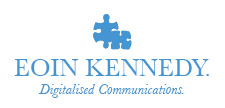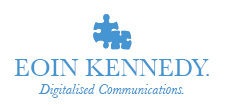LinkedIn Check List
I have been fan of LinkedIn for quite some time but have to remind myself about how powerful it can be when you use it they way it was designed. Originally people seemed to use it as a way of creating a digital presence so they would apppear in search engine queries for themselves. As with all social media there is a reasonable investment of time needed both in building your contact base/community, developing content and using it as a networking tool (participing in the community). Having a lot of people linking to you and not actively managing it is only vanity.
Following on from the previous mail on Twitter here are some checklist items for LinkedIn.
Beginner.
- Set up a profile, including detailed biographical details and photo.
- Find friends/potential contacts and add people to your network.
- Allow LinkedIn access to your contacts (via webmail) to speed up process by seeing who is on LinkedIn.
- Use search facility to additional people and customise mail invites to them.
- Ask someone to recommend you.
- Add any blogs or website information.
- Analysise other people connections to see if any could be relevant to your company/industry.
- Ensure LinkedIn details on are your business card and email signature.
Intermediate.
- Look for relevant groups related to your industry and join them.
- Recommend someone for their work if appropriate.
- Allow access to your contacts book and see who else is in LinkedIn.
- Comment and participate in groups you have joined.
- Decide on schedule of regularly checking LinkedIn and updating status.
- Monitor and vet LinkedIn requests.
- Forward a profile and share connections/recommended contacts with others in your network.
- Create extra links with people when you receive their busines card by checking to see if they are on LinkedIn.
- Watch the status updates to see who is linking to who.
- Use LinkedIn as a research tool to gain insight into a company before presenting to them.
Advanced
- Use applications including:
- – Incorporate your blog feed with wordpress.
- – Post presentations you have done using SlideShare.
- – Collaborate online using the Hubble Work spaces application.
- – Monitor company reputation through Twitter feed with Company Buzz.
- Spot an opportunity and set up a special interest group. Invite contacts and potential contacts. Keep alive with content & events.
- If appropriate use LinkedIn as platform for company news.
- Upgrade free account and utilise InMail and directly contacting prospects.
Joy Redmond from Flexitimers did an excellent post on how Karina Heavey set up the 121 Business Network on the IIA website.
Let me know what hints, tips, steps I have left out!!



2 Comments. Leave new
Good breakdown Eoin,
I must say i invested a bit of time in getting it started and i figured that the only benfit would be maintaining contacts when people changed jobs but when i started my new business a few months ago it was an invaluable recruitment resource. I saved well over €15000-20000 on two senior people by searching for the skillsets i needed.
My only struggle is opening up my contacts – which i dont – i think it would be great if you could open up sections of your contacts as sometimes you want to link to competitors as a market networking tool but i feel you can give away a bit too much.
ian
Thanks Ian. I have used it for recruitment purposes also and it was a great starting point. I suppose what makes it so sticky is that you get access to others contact so a bit of a double edge sword.